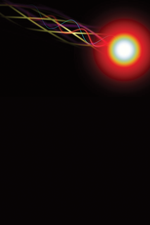Meson — a new build system
Better Builder

© Lead Image © tommroch, 123RF.com
Developers fed up with cryptic Makefiles should take a look at the new Meson build system, which is simple to operate, offers scripting capabilities, integrates external test tools, and supports Linux, Windows, and Mac OS X.
Finnish developer Jussi Pakkanen was frustrated by existing build systems with foolish syntax in configuration files and unexpected behavior [1]. During the Christmas season of 2012, he therefore decided to develop his own build system that would run fast, be reliable and easy to use, run on all major operating systems, and integrate important test tools like Valgrind.Just two months later, Pakkanen published a first version of his build system, which, as a trained physicist, he named for the Meson particle. Since then, the technology has advanced quickly. Version 0.17.0 – the latest version when this article was written – is already extremely stable despite its low version number and contains all the features planned by the program author.
Meson builds executables and libraries and supports multiple directories for different builds from the same source. The flexible configuration language is easy to learn, opens many possibilities to the developer, and supports if statements.
Presentable Features
Meson is written entirely in Python 3 and is released under Apache License 2.0. One minor drawback, however, is that, currently, Meson can only handle source code in the programming languages, C, C++, Java, and Vala. Meson does not bundle the source code into the appropriate compiler itself; rather, it simply generates configuration files for an existing build system. Under Linux, Meson generates build files for the relatively unknown but quite nimble Ninja [2] mini-build system. Alternatively, Meson outputs project files for Visual Studio 2010 or Xcode. Meson refers to all of these external tools as back ends.
[...]
Buy this article as PDF
(incl. VAT)
Buy Linux Magazine
Subscribe to our Linux Newsletters
Find Linux and Open Source Jobs
Subscribe to our ADMIN Newsletters
Support Our Work
Linux Magazine content is made possible with support from readers like you. Please consider contributing when you’ve found an article to be beneficial.

News
-
Parrot OS Switches to KDE Plasma Desktop
Yet another distro is making the move to the KDE Plasma desktop.
-
TUXEDO Announces Gemini 17
TUXEDO Computers has released the fourth generation of its Gemini laptop with plenty of updates.
-
Two New Distros Adopt Enlightenment
MX Moksha and AV Linux 25 join ranks with Bodhi Linux and embrace the Enlightenment desktop.
-
Solus Linux 4.8 Removes Python 2
Solus Linux 4.8 has been released with the latest Linux kernel, updated desktops, and a key removal.
-
Zorin OS 18 Hits over a Million Downloads
If you doubt Linux isn't gaining popularity, you only have to look at Zorin OS's download numbers.
-
TUXEDO Computers Scraps Snapdragon X1E-Based Laptop
Due to issues with a Snapdragon CPU, TUXEDO Computers has cancelled its plans to release a laptop based on this elite hardware.
-
Debian Unleashes Debian Libre Live
Debian Libre Live keeps your machine free of proprietary software.
-
Valve Announces Pending Release of Steam Machine
Shout it to the heavens: Steam Machine, powered by Linux, is set to arrive in 2026.
-
Happy Birthday, ADMIN Magazine!
ADMIN is celebrating its 15th anniversary with issue #90.
-
Another Linux Malware Discovered
Russian hackers use Hyper-V to hide malware within Linux virtual machines.

